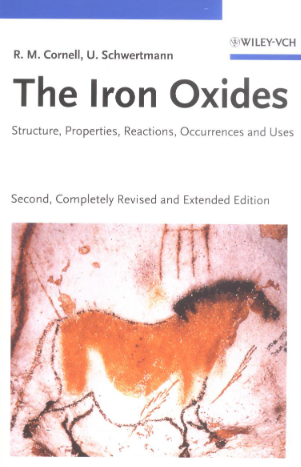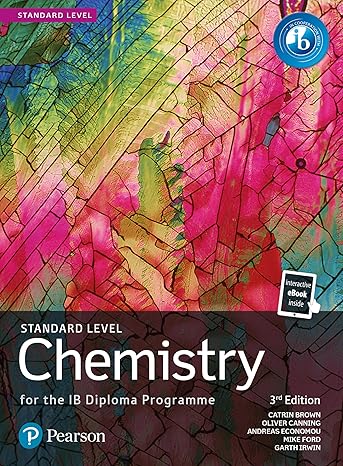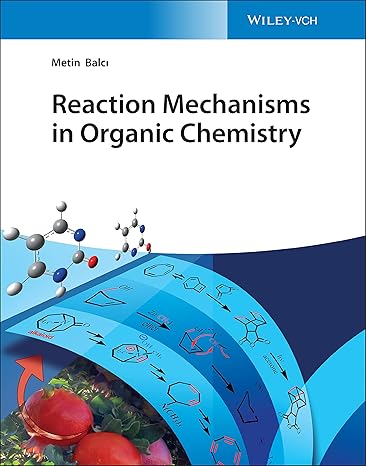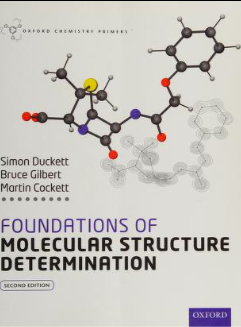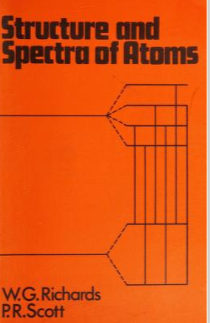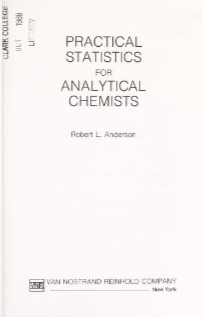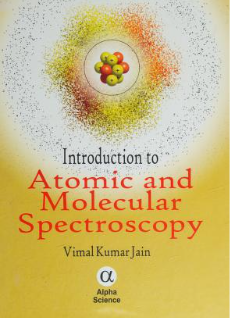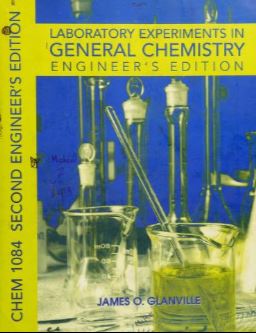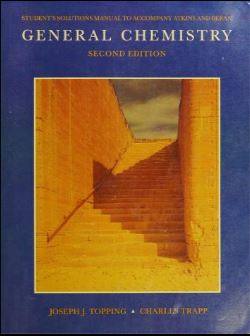5 Surface area and porosity 5.1 Surface Area The specific surface area of a solid is the surface area of a unit mass of material, usually expressed as m2 g ±1 . There is an inverse relationship between surface area and particle size. Massive crystals of hematite from an ore deposit (e. g. specularite) may have a surface area 51 m 2 g ±1 . As particle size/crystallinity is governed largely by the chemical environment experienced during crystal growth, the surface area of a synthetic iron oxide depends upon the method of synthesis and that of a natural one, upon the environment in which the oxide formed. The oxide surface has structural and functional groups (sites)which interact with gaseous and soluble species and also with the surfaces of other oxides and bacterial cells. The number of available sites per unit mass of oxide depends upon the nature of the oxide and its specific surface area. The specific surface area influences the re- activity of the oxide particularly its dissolution and dehydroxylation behaviour, inter- action with sorbents, phase transformations and also, thermodynamic stability. In addition, specific surface area and also porosity are crucial factors for determining the activity of iron oxide catalysts. Surface area is a property that can vary according to the method used to measure it. Areas found by gas adsorption may depend upon the size and nature of the probe molecule. A full description of the different methods in use and also their limita- tions is given in the text of Gregg and Sing (1991). The BET method (Brunauer, Emmett and Teller, 1938)with N 2 as the adsorbate, is by far the most common method of measuring the surface areas of Fe oxides. Var- ious commerical instruments are available for these measurements. The method in- volves measuring the extent of adsorption of N2 (at the boiling temperature of liquid N2 ± 77 K)on the outgassed solid as a function of the relative pressure, p/p0 , i. e. the adsorption isotherm; p is the partial pressure of the adsorbate and p0 is its equili- brium vapour pressure. The following linear relationship exists between the amount adsorbed, v, (cm3 g ±1 )and the relative vapour pressure, p/p0 ; p=p0 v
1 � p=p0 1 v
p0=p � 1 1 vmc c � 1 nmc � p p0
5:1 95 The Iron Oxides: Structure, Properties, Reactions, Occurences and Uses. R. M. Cornell, U. Schwertmann Copyright # 2003 WILEY-VCH Verlag GmbH & Co. KGaA, Weinheim ISBN: 3-527-30274-3 where vm is the monolayer capacity of adsorption (B in Fig. 5.3)and c the so called BET constant. c and vm are obtained from the slope of the plot, s, and the intercept, i, on the ordinate i. e. vm = (s + i)±1 and c = s i + 1. The surface area is then calculated from vm and the area occupied by one molecule of the adsorbate e. g. 0.162 nm 2 /mo- lecule for N2 . The BET constant c is related to the energy of adsorption i. e. the differ- ence between the molar heat of adsorption of the first layer and the molar heat of condensation of the adsorbate. As an example, Figure 5.1 (left)shows the original N2 adsorption curves of five goethites synthesized at 4, 15, 30, 50 and 70 8C and Fig- ure 5.1 (right)shows their BET-plots according to eq. (5.1). As N2 is a relatively large molecule, it may not be able to enter small pores. Furthermore, owing to its non ideal gas behaviour, N2 cannot be used for surface areas 51 m2 g ±1 . These problems can be overcome to some extent by replacing N2 with water (area 0.108 nm2 /molecule)which can enter very small pores, or with Ar (0.138 nm2 /molecule)which, with a lower saturation vapour pressure, can be used to measure samples with very low surface areas. The BET method requires that the sample be dried and outgassed to remove ad- sorbed water. This procedure may, if the outgassing temperature is too high, lead to a phase change at the surface of the oxide hydroxide and hence, an alteration in the specific surface area of the sample. Clausen and Fabricius (2000)recommend that ferrihydrite be outgassed at room temperature, at which temperature, a stable BET surface area is obtained after 19 hr of outgassing. Other methods of surface area determination depend, in general, on adsorption under well defined conditions of various solute molecules of known dimensions (Sposito, 1984; Davis and Kent, 1990). Some of these are dipole molecules so that dipole interactions with the surface or H-bonding are involved. Water adsorbed at a fixed relative water vapour pressure (e. g. 0.2)to provide a monolayer is one ex- ample (Torrent et al., 1990). An organic dipole frequently used for soils is ethylene glycol monoethylether (EGME)(Carter et al., 1965). The main problem with these dipole molecules lies in their mutual association which may lead to localized ad- sorption beyond a monolayer (capillary condensation), particularly on porous mate- ria
چکیده فارسی
5 مساحت سطح و تخلخل 5.1 مساحت سطح سطح ویژه یک جامد مساحت سطح واحد جرم ماده است که معمولاً به صورت m2 g ± 1 بیان می شود. بین مساحت سطح و اندازه ذرات رابطه معکوس وجود دارد. بلورهای عظیم هماتیت از یک کانسار (مثلاً اسپکولاریت) ممکن است دارای سطحی برابر با 1±51 متر مربع باشد. از آنجایی که اندازه ذرات / بلورینگی عمدتاً توسط محیط شیمیایی تجربه شده در طول رشد بلور کنترل می شود، مساحت سطح یک اکسید آهن مصنوعی به روش سنتز و به روش طبیعی بستگی دارد، به محیطی که اکسید در آن تشکیل شده است. سطح اکسید دارای گروههای ساختاری و عملکردی است که با گونههای گازی و محلول و همچنین با سطوح سایر اکسیدها و سلولهای باکتری در تعامل هستند. تعداد مکان های موجود در واحد جرم اکسید به ماهیت اکسید و سطح ویژه آن بستگی دارد. سطح ویژه بر فعالیت مجدد اکسید به ویژه رفتار انحلال و هیدروکسیلاسیون آن، برهمکنش با جاذب ها، تبدیل فازها و همچنین پایداری ترمودینامیکی تأثیر می گذارد. علاوه بر این، سطح ویژه و همچنین تخلخل از عوامل بسیار مهم برای تعیین فعالیت کاتالیزورهای اکسید آهن هستند. مساحت سطح خاصیتی است که می تواند با توجه به روشی که برای اندازه گیری آن استفاده می شود متفاوت باشد. نواحی یافت شده توسط جذب گاز ممکن است به اندازه و ماهیت مولکول پروب بستگی داشته باشد. شرح کامل روشهای مختلف مورد استفاده و همچنین محدودیتهای آنها در متن گرگ و سینگ (1991) آورده شده است. روش BET (بروناور، امت و تلر، 1938) با N 2 به عنوان جاذب، تا حد زیادی رایج ترین روش اندازه گیری سطح اکسیدهای آهن است. ابزارهای تجاری مختلف برای این اندازه گیری ها موجود است. این روش شامل اندازه گیری میزان جذب N2 (در دمای جوش N2 ± 77 K) روی جامد خارج شده به عنوان تابعی از فشار نسبی، p/p0، یعنی. ه. ایزوترم جذب؛ p فشار جزئی ماده جاذب و p0 فشار بخار تعادلی آن است. رابطه خطی زیر بین مقدار جذب شده، v، (cm3 g ± 1) و فشار بخار نسبی p/p0 وجود دارد. p=p0 v 1 p=p0 1 v p0=p 1 1 vmc c 1 nmc p p0 5:1 95 اکسیدهای آهن: ساختار، خواص، واکنش ها، موارد و موارد استفاده. R. M. Cornell, U. Schwertmann Copyright # 2003 WILEY-VCH Verlag GmbH & Co. KGaA, Weinheim ISBN: 3-527-30274-3 که در آن vm ظرفیت تک لایه جذب است (B در شکل 5.3) و c به اصطلاح BET ثابت. c و vm از شیب نمودار، s، و قطع، i، روی مختص i به دست می آیند. ه. vm = (s + i)±1 و c = s i + 1. سپس مساحت سطح از vm محاسبه می شود و مساحت اشغال شده توسط یک مولکول از ماده جاذب e. g. 0.162 نانومتر 2 / مولکول برای N2. ثابت BET c با انرژی جذب i مرتبط است. ه. تفاوت بین گرمای مولی جذب لایه اول و گرمای مولی تراکم ماده جاذب. به عنوان مثال، شکل 5.1 (سمت چپ) منحنی های اصلی جذب N2 پنج گوتیت سنتز شده در 4، 15، 30، 50 و 70 8C را نشان می دهد و شکل 5.1 (راست) نمودارهای BET آنها را مطابق معادله نشان می دهد. (5.1). از آنجایی که N2 یک مولکول نسبتا بزرگ است، ممکن است نتواند وارد منافذ کوچک شود. علاوه بر این، به دلیل رفتار گازی غیر ایده آل، N2 نمی تواند برای سطوح 51 m2 g ± 1 استفاده شود. این مشکلات تا حدی با جایگزینی N2 با آب (مساحت 0.108 نانومتر مربع / مولکول) که می تواند وارد منافذ بسیار کوچک شود، یا با Ar (0.138 نانومتر مربع / مولکول) که با فشار بخار اشباع پایین تر، می تواند برای اندازه گیری استفاده شود برطرف می شود. نمونه هایی با سطح بسیار کم روش BET مستلزم آن است که نمونه خشک شود و از گاز خارج شود تا آب جذب شده حذف شود. این روش ممکن است، اگر دمای خروجی بیش از حد بالا باشد، منجر به تغییر فاز در سطح اکسید هیدروکسید و در نتیجه، تغییر در سطح ویژه نمونه شود. Clausen و Fabricius (2000) توصیه می کنند که فری هیدریت در دمای اتاق خارج شود، که در آن دما، سطح BET پایدار پس از 19 ساعت خروج گاز حاصل می شود. روشهای دیگر تعیین سطح به طور کلی به جذب سطحی در شرایط کاملاً مشخص مولکولهای املاح مختلف با ابعاد شناخته شده بستگی دارد (اسپوزیتو، 1984؛ دیویس و کنت، 1990). برخی از اینها مولکولهای دوقطبی هستند به طوری که برهمکنش دوقطبی با سطح یا پیوند H درگیر می شود. آب جذب شده در یک فشار نسبی بخار آب ثابت (مثلاً 0.2) برای ایجاد یک تک لایه یک مثال است (Torrent et al., 1990). یک دوقطبی آلی که اغلب برای خاک استفاده می شود، اتیلن گلیکول مونو اتیل اتر (EGME) است (کارتر و همکاران، 1965). مشکل اصلی این مولکول های دوقطبی در ارتباط متقابل آنها نهفته است که ممکن است منجر به جذب موضعی فراتر از یک لایه (تراکم مویرگی)، به ویژه در مواد متخلخل شود
ادامه ...
بستن ...
Authors
Dr. R. M. Cornell
Universitåt Bern
Department fçr Chemie und Biochemie
Freiestrasse 3
3000 Bern 9
Switzerland
Prof. em. Dr. Dr. h.c. U. Schwertmann
Technische Universitåt Mçnchen
Institut fçr Bodenkunde
85354 Freising
Germany
1st Edition 1996
1st Reprint 1997
2nd Reprint 1998
2nd Edition 2003
Cover Illustration
Prehistoric cave painting of a red horse from
Lascaux. The colours used in the painting
were obtained from the local deposits of red
and yellow ochres, i. e. iron oxides. Similar
ochre deposits in Southern France are still
mined for pigment production today. As
colouring agents, iron oxides have served
man more or less continuously for over
30,000 years. A major, modern technological
application of these compounds (mainly in
synthetic form) is as pigment.
(Courtesy of Muse National de Prhistorie
Les Eyzies).
This book was carefully produced. Never-
theless, authors and publisher do not war-
rant the information contained therein to be
free of errors. Readers are advised to keep in
mind that statements, data, illustrations,
procedural details or other items may
inadvertently be inaccurate.
Library of Congress Card No.: Applied for:
British Library Cataloguing-in-Publication
Data: A catalogue record for this book is
available from the British Library.
Bibliographicinformation published by
Die Deutsche Bibliothek
Die Deutsche Bibliothek lists this publication
in the Deutsche Nationalbibliografie;
detailed bibliographic data is available in the
Internet at <http://dnb.ddb.de>.
2003 WILEY-VCH Verlag GmbH & Co.
KGaA, Weinheim
All rights reserved (including those of trans-
lation in other languages). No part of this
book may be reproduced in any form ± by
photoprinting, microfilm, or any other
means ± nor transmitted or translated into
machine language without written permis-
sion from the publishers. Registered names,
trademarks, etc. used in this book, even
when not specifically marked as such, are
not to be considered unprotected by law.
Printed on acid-free paper
Composition ProSatz Unger, Weinheim
Printing Druckhaus Darmstadt, Darmstadt
Bookbinding Litges & Dopf, Heppenheim
Printed in the Federal Republic of Germany
ISBN 3-527-30274-3
&
Contents
1 Introduction to the iron oxides 1
2 Crystal structure 9
2.1 General 9
2.2 Iron oxide structures 9
2.2.1 Close packing of anion layers 10
2.2.2 Linkages of octahedra or tetrahedra 13
2.3 Structures of the individual iron oxides 14
2.3.1 The oxide hydroxides 14
2.3.1.1 Goethite a-FeOOH 14
2.3.1.2 Lepidocrocite c-FeOOH 18
2.3.1.3 Akaganite b-FeOOH and schwertmannite
Fe16 O16 (OH) y(SO 4 )z 7 n H2 O 20
2.3.1.4 d-FeOOH and d'-FeOOH (feroxyhyte) 22
2.3.1.5 High pressure FeOOH 23
2.3.1.6 Ferrihydrite 23
2.3.2 The Hydroxides 27
2.3.2.1 Bernalite Fe(OH)3 7 n H 2 O 27
2.3.2.2 Fe(OH)2 27
2.3.2.3 Green rusts 28
2.3.3 The Oxides 29
2.3.3.1 Hematite a-Fe2 O3 29
2.3.3.2 e-Fe2 O3 31
2.3.3.3 Magnetite Fe3 O4 32
2.3.3.4 Maghemite c-Fe2O 3 32
2.3.3.5 Wçstite Fe1±xO 34
2.4 The Fe-Ti oxide system 37
Appendix 37
3 Cation substitution 39
3.1 General 39
3.2 Goethite and lepidocrocite 42
3.2.1 Al substitution 42
V
The Iron Oxides: Structure, Properties, Reactions, Occurences and Uses. R. M. Cornell, U. Schwertmann
Copyright # 2003 WILEY-VCH Verlag GmbH & Co. KGaA, Weinheim
ISBN: 3-527-30274-3
ادامه ...
بستن ...
